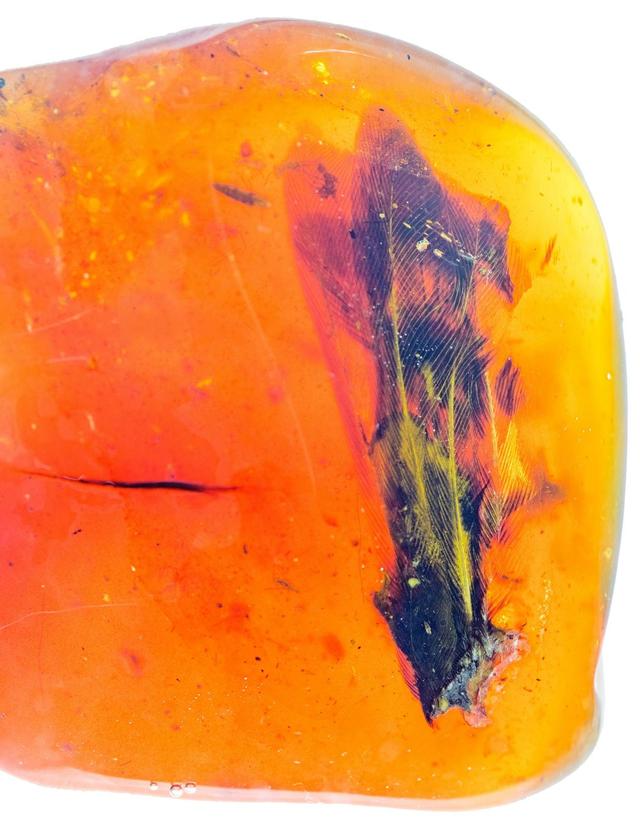Researchers discover unusually large bird wing in dinosaur-era amber


BEIJING -- An international team of researchers announced Monday that they have discovered an amber containing parts of an "unusually large" ancient bird wing dating back around 99 million years.
The bird wing found in Hukawng Valley in northern Myanmar, an area rich in amber fossil discoveries, is expected to help enrich the understanding of the size of ancient birds, according to Xing Lida, a paleontologist from the China University of Geosciences.
The amber, 5.3 cm long and weighing 79.4 grams, contains a fragmentary right wing with length measures less than a centimeter. It is thought to belong to enantiornithines, a group of extinct birds commonly found in the Cretaceous Period, Xing said.
Some feathers have also been preserved, with the longest at 37 mm. "It likely belonged to an individual that was about 10 cm long from its snout to vent," said Xing. "It could be a large enantiornithine or a new species of enantiornithines."
The results of the research were published in Cretaceous Research.
- Full moon lights up Mid-Autumn Festival across China
- Mid-Autumn Festival celebrated across China
- Celebrating Mid-Autumn Festival across China with joy, tradition
- 137 hikers in NW China relocated due to heavy snowfall
- China to employ 7,000 retired teachers to work in rural areas
- Students and faculty enjoy Mid-Autumn festivities at Nankai University





































